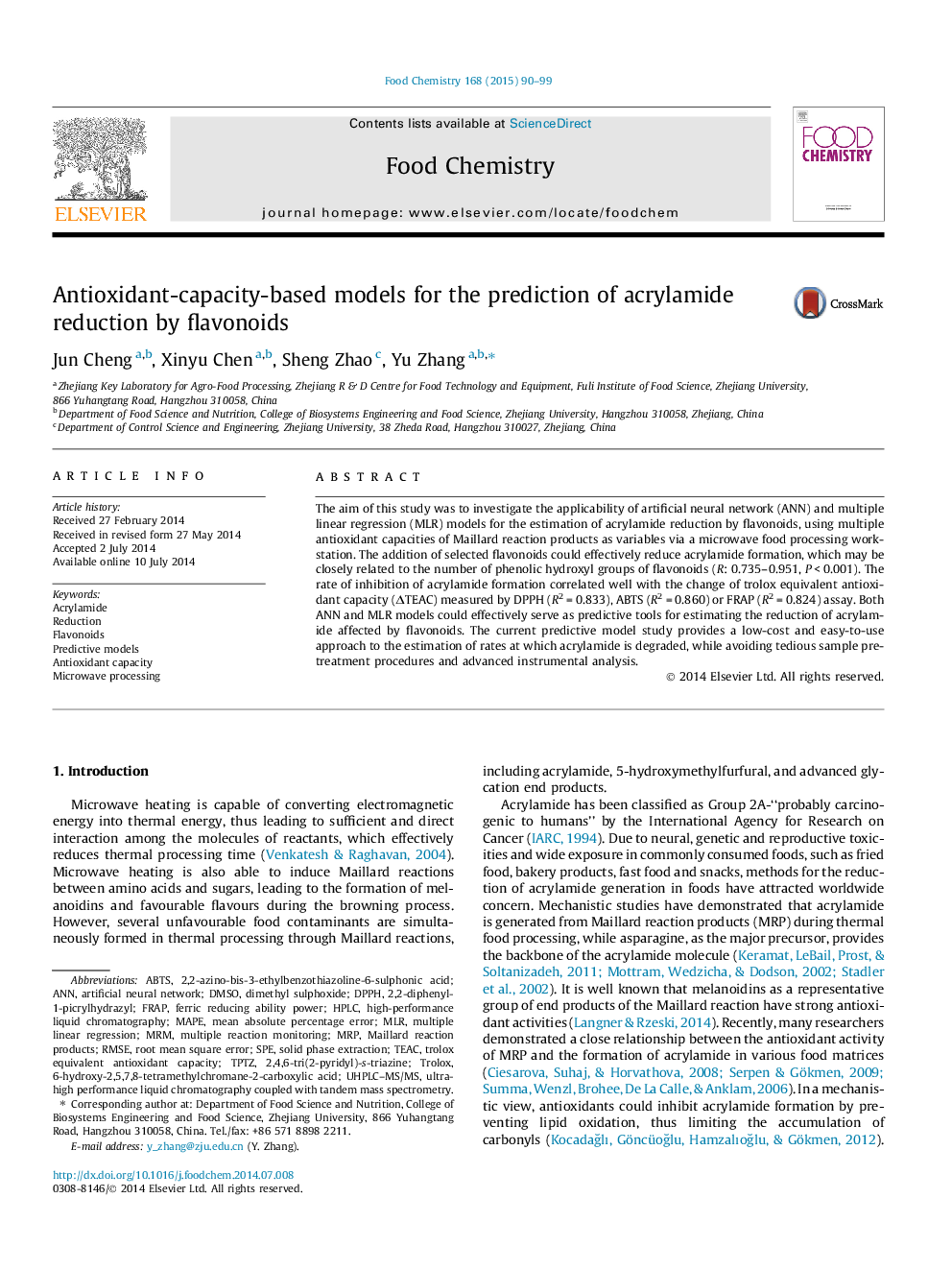| Article ID | Journal | Published Year | Pages | File Type |
|---|---|---|---|---|
| 7594995 | Food Chemistry | 2015 | 10 Pages |
Abstract
The aim of this study was to investigate the applicability of artificial neural network (ANN) and multiple linear regression (MLR) models for the estimation of acrylamide reduction by flavonoids, using multiple antioxidant capacities of Maillard reaction products as variables via a microwave food processing workstation. The addition of selected flavonoids could effectively reduce acrylamide formation, which may be closely related to the number of phenolic hydroxyl groups of flavonoids (R: 0.735-0.951, PÂ <Â 0.001). The rate of inhibition of acrylamide formation correlated well with the change of trolox equivalent antioxidant capacity (ÎTEAC) measured by DPPH (R2Â =Â 0.833), ABTS (R2Â =Â 0.860) or FRAP (R2Â =Â 0.824) assay. Both ANN and MLR models could effectively serve as predictive tools for estimating the reduction of acrylamide affected by flavonoids. The current predictive model study provides a low-cost and easy-to-use approach to the estimation of rates at which acrylamide is degraded, while avoiding tedious sample pretreatment procedures and advanced instrumental analysis.
Keywords
TPTZMRMMRPTEACANNMAPEDPPHRMSEFRAP2,4,6-Tri(2-pyridyl)-s-triazineSPEABTSMLR2,2-diphenyl-1-picrylhydrazyl6-hydroxy-2,5,7,8-tetramethylchromane-2-carboxylic acidDMSOUHPLC–MS/MSAcrylamideSolid phase extractionReductionTroloxdimethyl sulphoxideMultiple linear regressionRoot mean square errorArtificial Neural NetworkAntioxidant capacityTrolox equivalent antioxidant capacityFlavonoidsMaillard reaction productsPredictive modelsmean absolute percentage errormultiple reaction monitoringMicrowave processinghigh-performance liquid chromatographyHPLC
Related Topics
Physical Sciences and Engineering
Chemistry
Analytical Chemistry
Authors
Jun Cheng, Xinyu Chen, Sheng Zhao, Yu Zhang,
